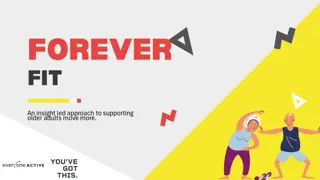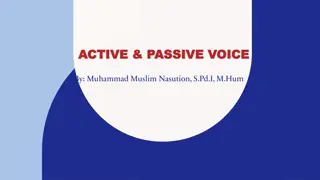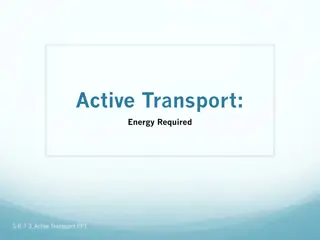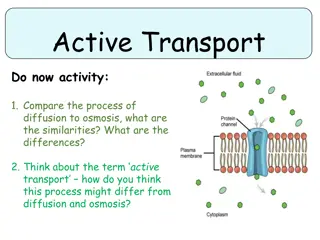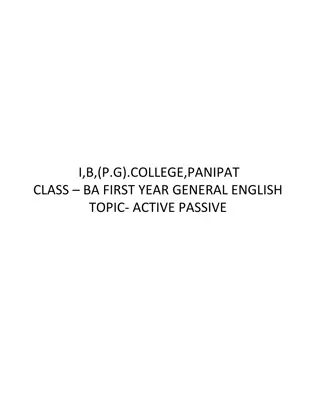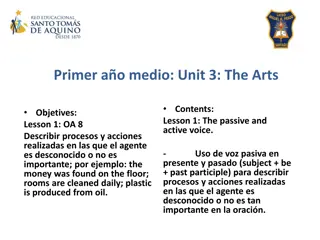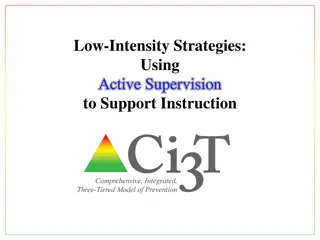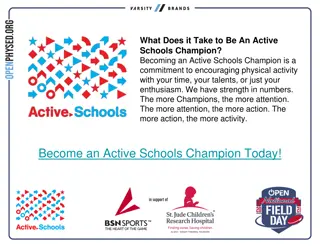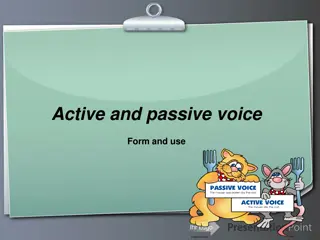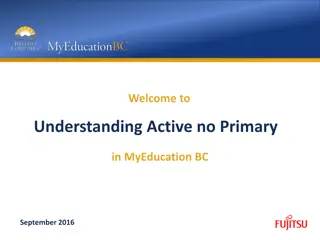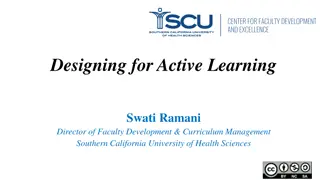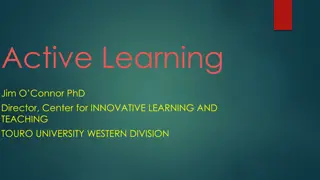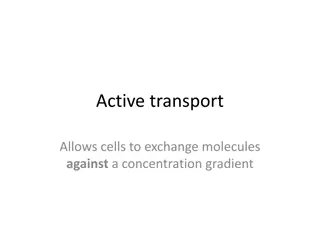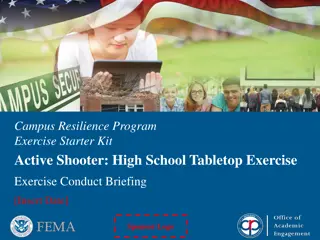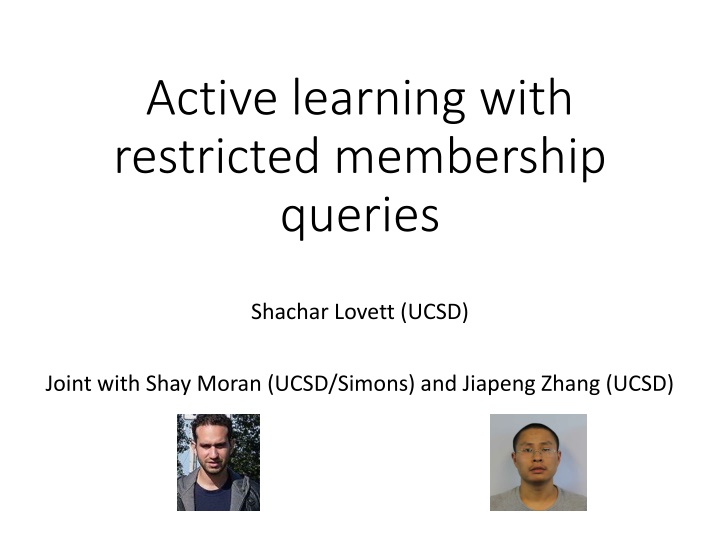
Active Learning with Restricted Membership Queries: Overview and Applications
Explore the concept of active learning, an extension of PAC learning, where learning algorithms can request labels for unlabeled data points to improve prediction accuracy. Discover the benefits, challenges, and applications, including a new model allowing restricted additional queries. Dive into open problems and understand when active learning is useful or ineffective.
Download Presentation

Please find below an Image/Link to download the presentation.
The content on the website is provided AS IS for your information and personal use only. It may not be sold, licensed, or shared on other websites without obtaining consent from the author. If you encounter any issues during the download, it is possible that the publisher has removed the file from their server.
You are allowed to download the files provided on this website for personal or commercial use, subject to the condition that they are used lawfully. All files are the property of their respective owners.
The content on the website is provided AS IS for your information and personal use only. It may not be sold, licensed, or shared on other websites without obtaining consent from the author.
E N D
Presentation Transcript
Active learning with restricted membership queries Shachar Lovett (UCSD) Joint with Shay Moran (UCSD/Simons) and Jiapeng Zhang (UCSD)
Overview Active learning basic definitions Positive example: when it is useful Negative example: when it is useless New model, allowing restricted additional queries Application: active learning of half-spaces Open problems
What is active learning? Active learning extends classical PAC learning In PAC (passive) learning, a learning algorithm is given a sample of labeled data and needs to predict an unknown concept In active learning, a learning algorithm is given a sample of unlabeled data, it can ask for the labels of (hopefully) a few data points, and still predict as well as the passive algorithm This is certainly useful, as it is much easier in practice to obtain unlabeled data; however, when is it possible?
PAC learning Focus on the realizable case Domain X, labels Y Unknown distribution D over ? Concept class ? = ?:? ? Unknown concept ? ?
PAC learning Domain X, labels Y Unknown distribution D over ? Concept class ? = ?:? ? Unknown concept ? ? Passive learning algorithm: Obtains a labeled sample ? = { ?1,?1, , ??,??} where ?? ? independently and ??= ? ?? Outputs a hypothesis :? ? Goal: minimize error ?? = Pr ? ? ? ? (?)
PAC learning Domain X, labels Y Unknown distribution D over ? Concept class ? = ?:? ? Unknown concept ? ? Active learning algorithm: Obtains an unlabeled sample ? = {?1, ,??} where ?? ? independently Queries a few points ??= ? ?? Outputs a hypothesis :? ? Goal: minimize error ?? = Pr ? ? ? ? (?)
Some simplifying assumptions Binary classification problems (? = {0,1}) Realizable case Unknown distribution & concept (prior-free case) Generalization bounds (VC dimension bounds): to learn with error ?, sufficient to sample n 1/? points and learn them without error I.e return hypothesis in the class which correctly labels the sample We will focus on the latter task (Our model allows for that even in multiclass classification problems, where VC dimension bounds may no apply)
Thresholds in 1D A canonical example for the power of active learning
Thresholds in 1D You are given unlabeled points ?1, ,?? Labels are 0/1 as follows: ??= 1?? ?, where t is an unknown threshold Goal: make few label queries, so that you can correctly label all the points Solution: binary search
Thresholds in 1D ??= 1?? ? t unknown
Thresholds in 1D ??= 1?? ? t unknown 1
Thresholds in 1D ??= 1?? ? t unknown 1 1 1 1 1 1
Thresholds in 1D ??= 1?? ? t unknown 0 1 1 1 1 1 1
Thresholds in 1D ??= 1?? ? t unknown 0 0 0 0 1 1 1 1 1 1
Thresholds in 1D ??= 1?? ? t unknown 0 0 0 0 0 1 1 1 1 1 1
Thresholds in 1D ??= 1?? ? t unknown 0 0 0 0 0 0 1 1 1 1 1 1
Thresholds in 1D Binary search performs great! To correctly label a sample of size n, we only need to query log(n) labels, and we can infer the rest Can we extend this to more interesting classes? Unfortunately, no [Dasgupta]
Half-planes in 2D A canonical example for the weakness of active learning
Half-planes in 2D You are given points ?1, ,?? 2 Labels are 0/1 as follows: ??= 1<??,?> ?, where ? 2,? are unknown Goal: make few label queries, so that you can correctly label all the points Any active algorithm requires ~? label queries
Half-planes in 2D Unknown line Hard case: line separates exactly one point from the rest. Need to query essentially all points to find out which one.
Can we salvage active learning? Various suggestions how to rectify this Average case analysis [Dasgupta; Hanneke] Restrictions on the target concept / distribution [Gonen] Distribution dependent [Dasgupta-Kalai- Monteleoni; Balcan-Broder-Zhang; El Yaniv-Wiener; Balcan-Long; Hanneke] Target concept dependent [Dasgupta; Balcan- Hanneke-Vaughan; Hanneke]
New model: Restricted membership queries Our suggestion: allow restricted membership queries What is restricted ? We give a communication complexity definition, based on a communication game Captures some intuitive notion of restricted , while staying context independent Show that whenever this is possible, then active learning is possible, with query complexity logarithmic in the sample complexity Very roughly: for error ?, sample 1/? unlabeled points, but make only log 1/? queries
Half-planes in 2D How membership queries restore the power of active learning
Active learning half-planes in 2D Given points ?1, ,?? 2 Labels are 0/1 as follows: ??= 1<??,?> ?, where ? 2,? are unknown Goal: make few label queries, so that you can correctly label all the input points In this case, we allow for comparison queries Comparison queries: Given two points ??,??, query which one is closer to the (unknown) line ? = {?: ?,? = ?} Allows for active learning with ?(log?) queries
Active learning half-planes in 2D Unlabeled Input: size n unknown line
Active learning half-planes in 2D Unlabeled Input: size n unknown line 1. Sample S of size 40
Active learning half-planes in 2D Unlabeled Input: size n unknown line 1. Sample S of size 40 2. Label S
Active learning half-planes in 2D Unlabeled Input: size n unknown line 1. Sample S of size 40 2. Label S 3. Find points in S closest to line
Active learning half-planes in 2D Unlabeled Input: size n unknown line 1. Sample S of size 40 2. Label S 3. Find points in S closest to line 4. Build cones
Active learning half-planes in 2D Unlabeled Input: size n unknown line 1. Sample S of size 40 2. Label S 3. Find points in S closest to line 4. Build cones 5. Forget points not defining cones
Active learning half-planes in 2D Unlabeled Input: size n unknown line - 1. Sample S of size 40 2. Label S 3. Find points in S closest to line 4. Build cones 5. Forget points not defining cones 6. Label inputs in cones (must be correct!) +
Active learning half-planes in 2D Unlabeled Input: size n unknown line 1. Sample S of size 40 2. Label S 3. Find points in S closest to line 4. Build cones 5. Forget points not defining cones 6. Label inputs in cones (must be correct!)
Active learning half-planes in 2D Unlabeled Input: size n unknown line 1. Sample S of size 40 2. Label S 3. Find points in S closest to line 4. Build cones 5. Forget points not defining cones 6. Label inputs in cones (must be correct!) 7. Repeat on unlabeled points
Active learning half-planes in 2D Unlabeled Input: size n unknown line 1. Sample S of size 40 2. Label S 3. Find points in S closest to line 4. Build cones 5. Forget points not defining cones 6. Label inputs in cones (must be correct!) 7. Repeat on unlabeled points
Active learning half-planes in 2D Main lemma: with probability 50% (over sample), each iteration labels 50% unlabeled points Also, each iteration makes O(1) queries So, whp O(log n) queries are sufficient First show proof of lemma Then show that it is an instance of a general framework: active compression schemes
Proof of lemma Lemma: with probability 50%, each iteration correctly labels 50% unlabeled points Pair of cones: defines a partial hypothesis :? {0,1,?} Main observation: If ?? ? then it must be correct So, we never make mistakes (inside or outside sample S) And we label all our sample S But we are allowed to abstain outside S But do we make progress on the original input?
Proof of lemma Partial hypothesis = pair of cones, defined by 6 points Side information (labels, which one is closest to line) which can be encoded using 10 bits #possible hypotheses ? ?6 Hypothesis is bad if labels <50% points in input S labels ? < 2 ? Fix bad hypothesis h. Pr Union bound: can take ? = ?(log?) However, sufficient to take ? = ? 1 (similar to how VC dimension arguments beat the union bound)
Proof of lemma Let ? = ?1, ,?? be a random sample Partial hypothesis is ? = ?,? ? = ?(?) ?of size ? = 6 ? = ? ? 0,110 Let ? = {??:? ?}. Union bound over choices of ?,? Main observation: Given fixed B,I, = ( ??:? ? ,?) is independent of other sample points {??:? ? ?} Pr bad labels all ? 2 ? 6 Pr ? ??? For m=40 it is < 50% ? 62102 ? 6
Active learning half-planes in 2D Simple iterative algorithm In each iteration: Sample 40 points Query them (label + comparison) Design a confident partial hypothesis: must be correct whenever it does not abstain labels all our sample correctly Remove labeled points and repeat Analysis: Partial hypothesis defined by few points + side information
General framework: Active compression schemes
Sample compression schemes Littlestone and Warmuth (1986) conjectured that PAC learnability can be characterized by a communication game, called sample compression schemes Moran and Yehudayoff (2016) proved this conjecture (at least qualitatively) Here, we generalize these notions to active learning Extends version space compression [BenDavid-Urner, ElYaniv-Wiener] to allow for additional queries
Active compression schemes Input: unlabeled sample ? from the original input Compressor: Knows S Queries points (in or outside the sample) Selects ? ? (important points) and ? 0,1? (side information) Sends T,B to Reconstructor (ideally: ? ,|?| |?|) Reconstructor: Receives T,B from Compressor (crucially: doesn t know S) Queries points (in or outside the sample) Outputs partial hypothesis :? {0,1,?} where = ( ??:? ? ,?) Requirements: h is confident: ? {? ? ,?} for all ? ? h labels all ? ? correctly
Active compression scheme: half-planes Input: sample S of size |S|=40 Compressor queries labels+which is closest to line Sends |T|=6 points + b=10 bits of side information
Active compression scheme: half-planes Input: sample S of size |S|=40 Compressor queries labels+which is closest to line Sends |T|=6 points + b=10 bits of side information Reconstructor receives (?,?) Designs partial hypothesis (?,?) h confident (makes no mistakes) labels all of S may abstain on points outside S ?
Active compression schemes Input: unlabeled sample ? = ?1, ,?? Compressor Reconstructor T,B Queries points in ? Sends ? ? and ? 0,1? Designs partial hypothesis :? {0,1,?} where = (?,?) h is confident (doesn t make mistakes) and labels all of S Communication: cost ? = max ? + ? Theorem: cost(?) ?/6 active learning
Active compression schemes imply efficient active learning C = concept class Goal: correctly label sample of size n Main theorem: if m, active compression scheme, where cost(?) ?/6 #??????? = ?? then ?, there is an active learning algorithm which makes ?? log? queries, and labels all n inputs points correctly Proof: generalization of the proof for half-planes
Designing active compression schemes Focus on learning half-spaces in ?
Half-spaces Goal: active learning for half-spaces in ? (for simplicity, we consider the homogeneous case) Given sample points ?1, ,?? ? and an unknown ? ?, learn ????( ??,? ) for all i Active compression scheme: query points (possibly outside sample) such that Few sample points + side information define a set W ? ? ? Any ? ? correctly labels the sample points Defines confident partial hypothesis: ? = ? if ???? ?,? = ? for all ? ? , otherwise ? =?
Dual problem Dual problem: given a collection of hyperplanes ?1, ,?? ?, and an unknown point ? ?, query a few points and decide ???? ? ,?? This is exactly the hyperplane arrangement problem, a central problem in combinatorial geometry active compression scheme = linear decision tree Known results on linear decision trees directly give active compression schemes


